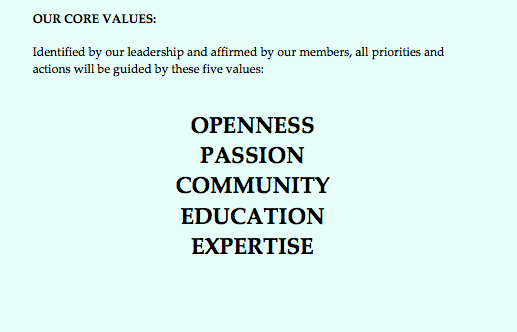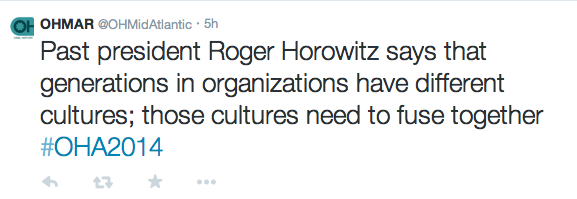How do regional oral history organizations plan for success — and what roles can they play for oral historians and the national organization?
This was the subject of our lively and engaging panel at #OHA2014.
Chaired by OHMAR Board Member LuAnn Jones, Jason Steinhauer and Anne Rush of OHMAR — who both worked on OHMAR’s 2015 – 2020 strategic plan — spoke about the extended process of formulating the plan, soliciting feedback from past presidents and membership, and looking to OHMAR’s past successes to determine the core values that would guide its future.
Don Ritchie and Roger Horowitz, both past presidents of OHMAR, recalled how OHMAR evolved from a small start-up in the 1970’s to an organization that primarily served professional oral historians in the late 1990’s. Ritchie recalled meeting in the stairwells during early OHA meetings; Horowitz drew a parallel to Star Trek in recapping the different generations of OHMAR that have each expanded its reach to different types of oral historians: institutions, universities, government, the military, community organizations, the arts, journalism, independent contractors and those just starting out.
Cliff Kuhn, Executive Director of the OHA, spoke of building deeper partnerships between the national and the regional organizations in areas such as leadership development, filling vacant national committee positions, offering membership discounts, and doing joint programming such as workshops and meetings.
The floor then opened to Q&A. Oral historians from Colorado and Utah shared their idea to start a regional oral history organization in the “square states.†They exchanged ideas with the panelists on how to partner with existing history and archives organizations in Colorado and Utah, identifying target audiences for their organization, and creating resources that prospective members would value.
The key take-aways that emerged from the two-hour session:
- Connecting regional organizations to the national organization is crucial to the success of both.
- Developing leadership and planning for the future are critical for volunteer organizations.
- Organizations must develop pipelines of volunteers, and must constantly rethink what they are doing.
- Buy-in from membership on new ideas and initiatives is critical.
- Organizations must support all oral historians at all levels: from grassroots community history to oral historians at large institutions.
The turnout was great and the conversation was lively. Many thanks to all who participated!
Our full strategic plan is available on our website, here.





